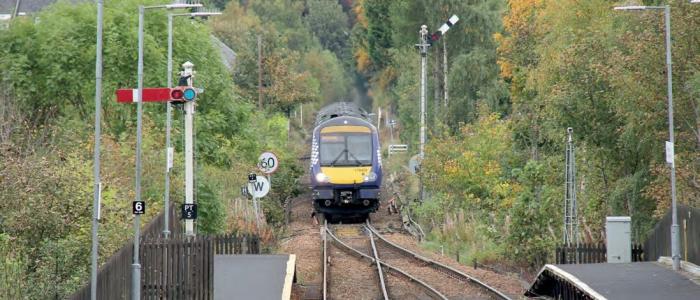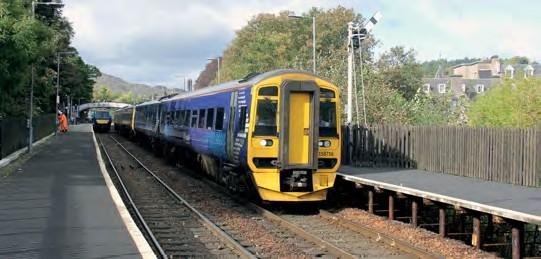

NETWORK RAIL has awarded a £10 million contract for the upgrade of the Highland main line to Bam Nuttall.
The contract involves modifications at Pitlochry station, extending the loop north of Aviemore station and upgrading signalling systems at both locations.
At present, the Up starting signal at Pitlochry, controlling entry to the single line section south to Dunkeld & Birnam, is situated close to the southern end of the loop so that although Pitlochry is a major passing place, only one train can enter the station at a time – meaning there is often a delay before either an Up or Down service can access the platform. The existing semaphore signalling will be replaced with colour-light signals. By lengthening the Up platform northwards and re-siting the Up starting signal northwards, two trains, a northbound and a southbound, will then be able to enter Pitlochry simultaneously, which will help to speed traffic up at this location.
The signalbox is to be closed, with the loop at Pitlochry to be controlled by a panel that will be situated in the signalbox at Stanley.
The works at Pitlochry and Aviemore are a forerunner to the introduction of HSTs on the route by ScotRail starting later this year and will enable delivery of an hourly service and a journey time reduction between Inverness and the Central Belt of 10 minutes.
The contract forms the second phase of works on the Highland main line, following an initial phase in 2012 that increased the number of services from nine to 11 trains per day in each direction.
